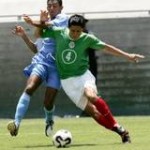 Turf toe is an painful injury to the base of the big toe that typically occurs in athletes who play field sports, such as football, baseball or soccer. Turf toe describes an injury to the joint at the base of the big toe when an athlete forcefully jams his toe into the ground or bends his toe backward, beyond its normal limits. The injury often occurs on a grass or artificial turf playing field which is why the name “turf toe” was adopted.
Turf toe is an painful injury to the base of the big toe that typically occurs in athletes who play field sports, such as football, baseball or soccer. Turf toe describes an injury to the joint at the base of the big toe when an athlete forcefully jams his toe into the ground or bends his toe backward, beyond its normal limits. The injury often occurs on a grass or artificial turf playing field which is why the name “turf toe” was adopted.
What Happens in a Turf Toe Injury?
The type of extreme force that causes turf toe injuries generally results in a bruise at the base of the big toe where the joint capsule, and ligaments have stretched or torn. In some cases, an athlete may even dislocate the big toe. Not only does turf toe result in a great deal of immediate pain, but over time the joint may become stiff, less flexible, and more prone to arthritis. This limited mobility in the joint can increase the likelihood of the big toe being injured again in the future. If turf toe is not allowed to heal completely, it can become a chronic injury that may limit an athlete’s ability to compete fully.
Common Causes of Turf Toe Injuries
Turf toe is especially common in athletes who play field sports and even more common in those who play on artificial turf. Experts argue that running, jumping and cutting movements on the unusually hard artificial field makes jamming or overextending a toe even more likely than on grass fields. Other experts feel that sports shoes and footwear can contribute to turf toe, and that athletes need to wear the correct sports cleats for their sport. Some experts recommend a stiff shoe with less flexibility in the forefoot to prevent overextending the toe joint.
How Turf Toe Is Diagnosed?
Turf toe is considered a soft tissue injury and the diagnosis is fairly straight-forward. A physician will typically diagnose turf toe based on an athlete’s symptoms, sports history, and a physical examination of the injured toe joint. In some cases, x-rays may be taken to rule out a toe fracture, arthritis or other trauma to the bones.
How Turf Toe Is Treated?
The immediate treatment of turf toe is to control the swelling and inflammation of the affected toe joint. Using RICE treatment (rest, ice, compression and elevation) along with anti-inflammatory medications is usually helpful. The athlete must also rest the sore toe to allow the joint to heal.
It’s often recommended that athletes wear a stiff-soled shoe during healing to prevent too much flexion in the joint. Pro athletes often wear a shoe with a steel plate or have their athletic trainer tape the toe to keep it from bending too far backward. In fact, many pro football players routinely have their toes taped before games to prevent turf toe.
Surgery is rarely recommended as a treatment for turf toe, but if an athlete develops a bone spur, surgery to remove the spur may be warranted.
When Can You Return to Sports After Turf Toe
It can take a long time for turf toe to heal completely, and athletes should expect to take a break from field sports for at least three weeks while the joint capsule heals. Athletes who return too soon or play through pain are often sidelined even longer in the future.
Turf Toe Prognosis
While an athlete can heal from turf toe and return to sports, unfortunately, turf toe often returns and can reduce the long-term function of the big toe joint. Arthritis of the big toe is quite common in those who suffer repeated turf injuries or trauma to the big toe joint. In fact, most professional football players will have some degree of arthritis and limited flexibility in their toes by the time they retire.
